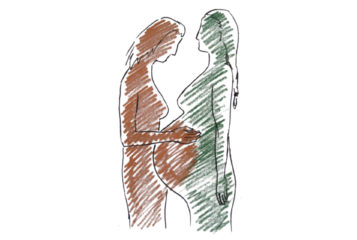More single women and same-sex couples are opting for IVF as the success rate continues to improve, according to new data from the UK regulator.
The Human Fertilisation and Embryology Authority (HFEA) examined trends in fertility treatment numbers and patient demographics from 1991 to 2019. As well as reporting an increase in IVF successes, the report revealed emerging trends in the patients seeking fertility treatment, and exposed large disparities in NHS funding.
HFEA chair Julia Chain summarised that there have been 'many positive changes in the treatment of patients', citing 'birth rates increasing, multiple birth rates falling and treatment becoming safer.'
The report, published last week to mark thirty years since the establishment of the HFEA, analysed trends in assisted reproductive technologies such as IVF and donor insemination (DI). It found that since 1991, for all patient groups under the age of 43, the success rate of IVF and DI has increased – rising, for example, from six percent in 1991 to 25 percent in 2019, for patients aged 35 to 37.
The multiple birth rate has dramatically declined, from 28 percent in 1991 to just six percent in 2019, improving treatment safety. The HFEA explained that this reflects a change in treatment practice, where now more usually one embryo is transferred back to the patient during treatment instead of multiple embryos.
Notably, the number of single women choosing to undergo IVF has doubled to two percent of all IVF cycles. The number of same-sex couples undergoing IVF and DI has likewise more than doubled – 2345 IVF cycles involved a female patient with a female partner in 2019, a four-fold increase from 2009 alone. Despite this, the guidelines for provision of fertility treatment differs for same-sex couples and other family structures.
Sarah Norcross, director of the Progress Educational Trust (which publishes BioNews), commented that the report shows 'the routes to family formation are changing', and called on the National Institute for Health and Care Excellence (NICE) to re-evaluate its guidelines.
As well as analysing trends in fertility treatment, the report also highlighted the 'postcode lottery' of NHS funding across the UK. In Scotland, 62 percent of IVF cycles were funded by the NHS, while in some parts of England this was as low as 20 percent.
Norcross said the figures demonstrate 'the harsh reality of more than half a decade of cuts to NHS-funded fertility services in England, with potentially more to come later this year in the north London area.'
She added: 'It is shocking that the East of England is now the worst place to live in the UK, with just 20 percent of treatment funded, when nearly a decade ago it was the best place to live.'






Leave a Reply
You must be logged in to post a comment.